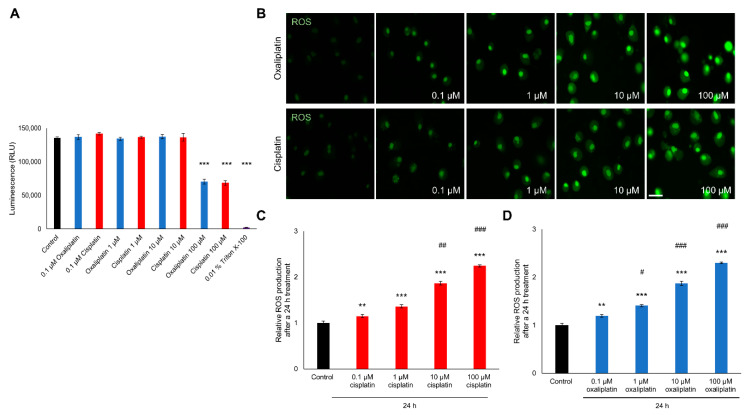Figure 1.
Viability and reactive oxygen species (ROS) production of cultured dorsal root ganglion (DRG) neurons after exposure to different concentrations of cis- or oxaliplatin for 24 h. (A) Viability of dorsal root ganglion (DRG) neurons was not affected by cis- or oxaliplatin exposure in a concentration of 0.1 µM, 1 µM, or 10 µM for 24 h, compared to untreated control neurons (p > 0.05). Exposure to 100 µM cis- or oxaliplatin or to 0.01% Triton X-100 reduced viability of DRG neurons after 24 h (*** p < 0.001). (B) Fluorescence of CellRox (green) in DRG neurons exposed to different concentrations of cis- or oxaliplatin for 24 h. (C) Reactive oxygen species (ROS) production of DRG neurons was increased by cisplatin exposure after 24 h (** p < 0.01, *** p < 0.001), compared to untreated control neurons. A concentration-dependent effect was observed for the range of 1 µM to 100 µM (## p < 0.01, ### p < 0.001). (D) Exposure of DRG neurons to different concentrations of oxaliplatin increased ROS production as well (** p < 0.01, *** p < 0.001). A concentration-dependent effect was observed for the range of 0.1 µM–100 µM (# p < 0.05, ### p < 0.001). n ≥ 200 cells per condition for ROS measurement. n = 3 independent experiments per condition. * = significant effect compared to control condition. # = significant effect to previous concentration. Scale: 50 µm.

